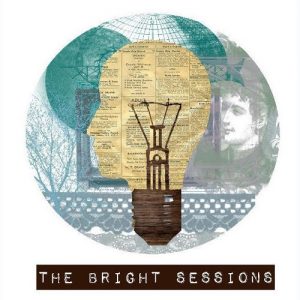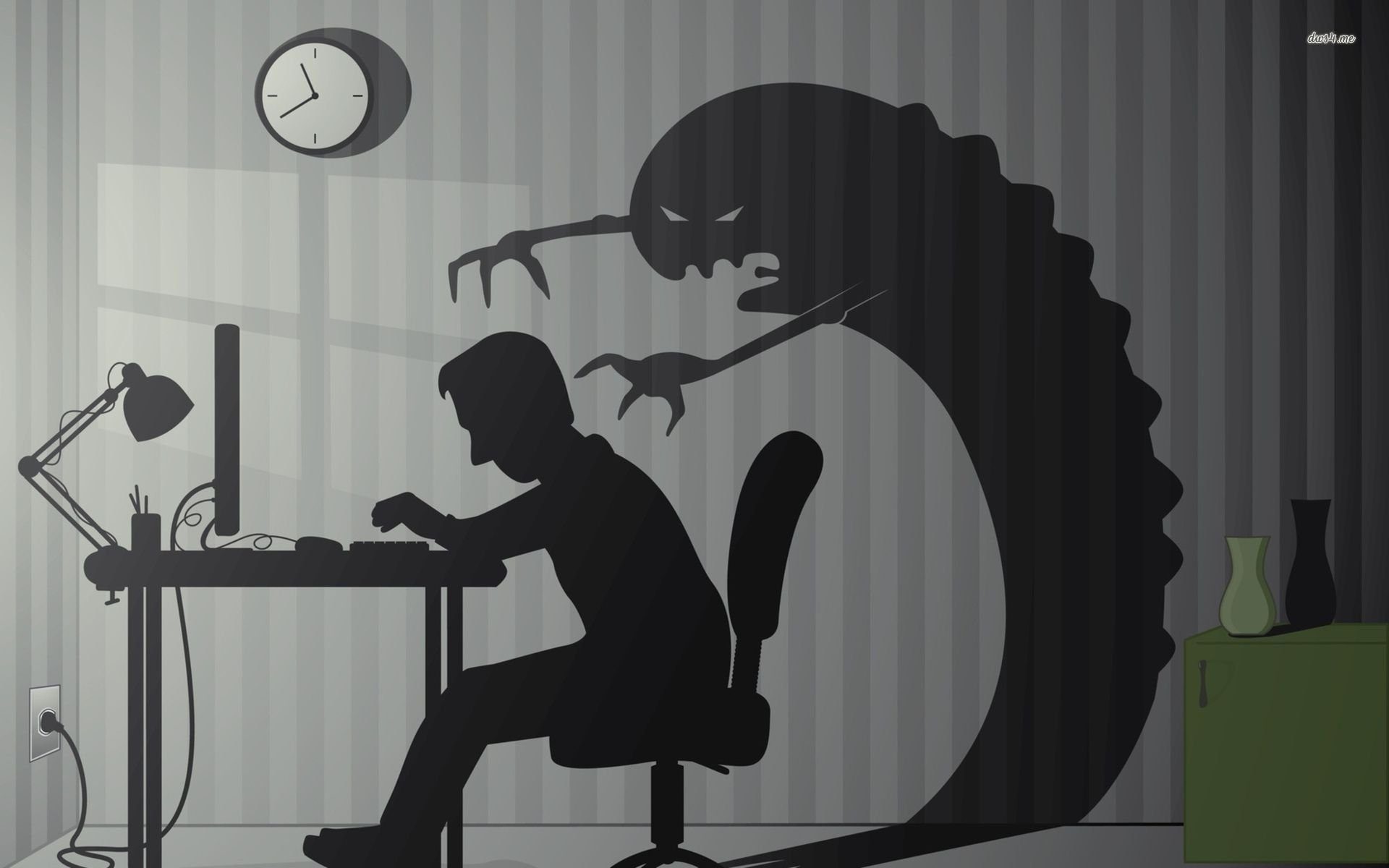A common trope in the genre of horror is that the monster or the object of possession and perversion is often female. For example, the 1973 post-modern horror film, The Exorcist, centers a prepubescent young girl being possessed by a demon. The audience witnesses her turn from innocent and loving, to tortured and pained, to evil and destructive. An additional and more recent example of an overcome female is in a recent horror podcast series The Bright Sessions. This fictional series consists of episodes that are a therapist’s secret recordings of her “strange and unusual” patient sessions. The patient of the first episode is a 25-year-old woman who gradually reveals during her first session that she can time travel. These two works both portray a girl or woman as a crazed and these characters embody a cultural imaginary of people no longer being bound by what is normal or human. It is through comparing these two works that I argue that The Exorcist and episode one of The Bright Sessions tap into a deeper cultural anxiety—that if an individual were granted with capabilities that exceeded human limits, then he or she would live a life of pain, destruction, and loneliness.

The Exorcist
The film The Exorcist was an extremely popular horror film during its time. It led to major box office success followed by multiple imitation films throughout the decades (The Devil Within Her, Abby, Cathy’s Curse, Lisa and The Devil, To the Devil—A Daughter, Audrey Rose, and The Sexorcist). Creed graphically summarizes in her psychoanalysis of The Exorcist the horrid actions of the main character. “Regan, the young female protagonist… is a truly monstrous figure. She spews green bile, utters foul obscenities, tries to fuck her mother, causes inanimate objects to fly, rotates her head full circle on her neck, knocks men to the floor with one punch, tries to castrate a priest, murders two men, and in her spare time masturbates with a crucifix” (Creed 31). One common trope in horror films and a central one to this plot is the perversion of what is good an innocent. The film initially introduces the audience to a prepubescent “pure” girl who has a loving relationship with her mother. However, as the demonic possession progresses both Regan’s purity and warm maternal relationship dilapidate. She begins to levitate, make furniture fly across the room, and her skin corrodes and mutates to look undead. Possessed Regan looks and has obtained abilities that are beyond human. To extend what Creed argues, the possession not only contorts Regan to be socially improper, sexually impure, and unstoppably violent, but this perversion also excuses her actions and is “perversely appealing” (31). Particularly within post-modern thought, society questions and blurs the lines of authority, religion, and truth. When Regan becomes possessed, she simultaneously challenges religion, parental control, and sexual repression. The obeying of authority and the policing of sexuality are two major social norms on which the demon pushes back. In this vein, the film serves as an outlet through which the audience can liberated from societal repressions. It is important to note, however, that this liberation comes at the cost of the well-being Regan and she harms those that love and want to help her along the way.

The Bright Sessions
The Bright Sessions, is a relatively new podcast (episode 1 was released in 2015) which has received popularity and high acclaim within the horror podcast genre. To summarize the premise of the series, the therapist Dr. Bright has placed an ad in the paper offering “therapy for the strange and unusual.” Dr. Bright secretly records her sessions for research and each episode in the series is the recording of one patient’s session. As a disclaimer, I will be analyzing and comparing The Exorcist to only the first episode of this podcast series for this is a scope I can appropriately and responsibly cover. Episode 1 walks its listeners through the first session of a patient named Samantha Barnes (or Sam). Sam came to see Dr. Bright after seeing the ad in the paper and Sam discloses that she came with the understanding that she sees herself as “strange and unusual.” Throughout the episode, the listener learns that Sam can time travel. The unexpected part of the session is not her superhuman ability though. The surprise is that she does not reveal her secret with fascination or wonder, but more accurately, Sam—similar to how one would confess to a Catholic priest—confesses her time-traveling ability to Dr. Bright with guilt and pain. Sam up until this point has pent up her frustration and paranoia of her secret ability over which she has no control. The mere act of time traveling is out of Sam’s control and it brings her much bodily pain. Throughout Sam’s session she vents about how time traveling “sucks” and how she was “scared” when it first happened to her. She describes her experience time traveling in the following lines:
Sam: They can never see me, I’m just there. It’s like being stuck inside someone’s memory or something. I can move around but I can’t talk. I’m basically a ghost. Or a reverse ghost. Not dead or visible. Or not even born yet, I guess. Ugh, I don’t know.
Dr. Bright: That… that must be difficult.
Sam: It’s horrible.
In Sam’s line “it’s horrible,” listeners can hear the pain in Sam’s voice. This moment in the podcasts merits more analysis into the podcast as a medium and how it effectively contributes to the empathy listeners feel. Understanding podcasts as a medium is particularly important to understanding how listeners feel Sam’s pain. Merely looking at these few transcribed lines and reading Sam’s pain and frustration on a page is one thing, but podcasts offer more intimacy and relatability than other digital media. Podcasts are absorbed only through hearing. Various scholars analyze the intimacy of radio and podcasts: Crisell notes that much like radio channels, podcasts are a “blind medium” through which listeners “cannot see its messages, they consist only of noise and silence” and they must imagine the scenery in their own minds (15); “voice is an intimate key to audiences’ hearts…” and “podcasts with headphones further emphasizes the individual’s experience of listening to a conversation with a friend” (Lindgren 27). Throughout this episode, listeners do not just passively listen to Sam’s story, but in a way, listeners recreate it in their imaginations and empathize with it. Sam’s deep exhale after confessing her strange and unusual ability, or the tightness in her throat when she talks about her bodily pain, or the acceleration in her speech as she laments her loneliness and frustrations—all of these extra-textual components cue listeners to internalize and feel Sam’s resentment and despair instead of merely read it on a page or see it on a television screen. Though Sam has a super capability that, in most fictional worlds, would seem “cool” and heroic, listeners realize that Sam’s reality could not be more opposite. Sam has been living in hiding with no family or friends and her secret is more of a curse than it is a blessing. The ability has brought Sam physical pain, emotional turmoil, and deprived human connections.
The Bigger Picture
Now what do these two works, published on completely different digital mediums, have to do with each other? As I have laid out, there are many thematic similarities between the two: the possession of a young girl/woman, the confessing and seeking of help from a higher authority (whether that be a pastor or a professional therapist), and uncontrollable extraterrestrial capabilities being assaulted onto a human being. However, these texts relate in a way that is a microcosm of a deeper cultural anxiety. Humankind evolves and adapts to survive and progress in a world where its existence—no matter the advancement of technology—will ultimately come to an end. Regan’s being possessed by a demon and Sam’s having the uncontrollable ability to time travel tap into the human fantasy of obtaining unimaginable and unlimited abilities. The heartbreak of these two works lie in man’s wish to be infinite. Regan and Sam embody the tragic, and arguably more realistic, repercussions of coming across a remedy to finite and insignificant existence. These two character show its audiences that obtaining these abilities would hurt them and hurt their loved ones rather than offer an abundant and beautiful life. Ultimately both Regan and Sam lead a life of heartbreak and loneliness.
In The Exorcist, Regan originally symbolizes innocence, love, and youth and then becomes the very opposite of what the audience treasures: destructive, perverse, and squeamishly abject. The Bright Sessions observes a girl who experiences immense pain from a supernatural ability for which she never asked. These two works speak to the collective horror story of what it could potentially be like for man to obtain a remedy to the universal fear of death and insignificance. Instead of superhuman power offering a life of catharsis and relief, it would only bring about pain, loneliness, and destruction.
Works Cited
Creed, Barbara. The monstrous-feminine: Film, feminism, psychoanalysis. Psychology Press, 1993.
Crisell, Andrew. Understanding radio. Routledge, 2006.
Lindgren, Mia. “Personal narrative journalism and podcasting.” Radio Journal: International Studies in Broadcast & Audio Media 14.1 (2016): 23-41.




